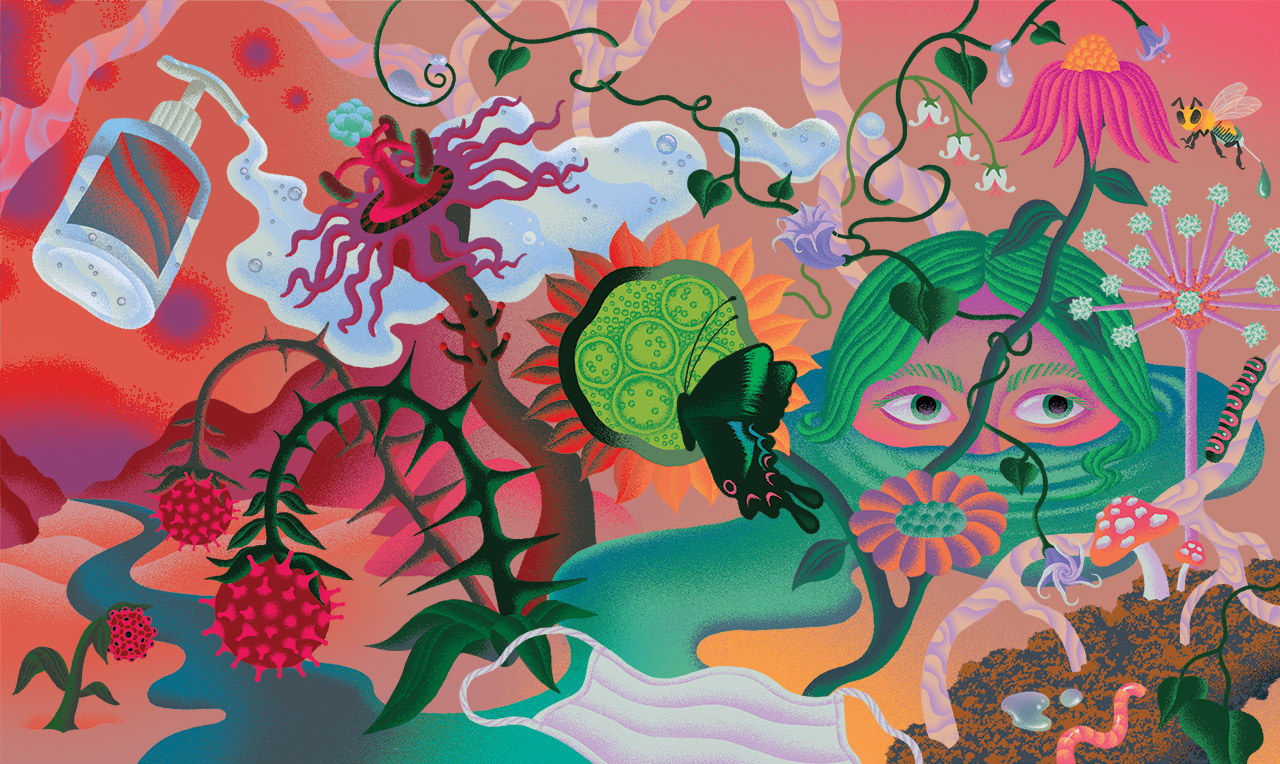
















In April of last year, when the world as we knew it was closing in on us and there was very little to read that felt comforting, one article broke through for me, probably unsurprisingly: “How I Knew It Was Over,” written by Ruth Graham for Slate. The piece consists of interviews with people who had lived through other outbreaks of disease discussing the moment they realized things had turned a corner for the better. From a woman who experienced the 1918 flu to a man who survived polio, their stories made me feel for the first time that there was an endpoint to look toward.
As I swam through a sea of pandemic-related content this past year, these were the tales I found myself clinging to; not the constantly shifting information about case rates or vaccinations or variants, but stories of people in the past who had lived. Historical pieces about how the radiators in my apartment were actually designed with a pandemic in mind or how children went to school outside during a previous public-health crisis stood out from a million charts or constantly updated health guidelines.
Considering those stories again, one thought has come to mind: how much more documentation our descendants will have of this time than the relatively small amount of information we have pieced together from crises before ours. The internet overwhelms in what it offers, but sometimes there are moments that let you step back and take a look. That feeling of “when will you know that life has changed” is what we set out to capture in the Reemergence Issue—what our world looks like right now, caught between a before and an after, and how we are dealing with that.
In working on this issue, I have found myself returning to what I wrote a year ago, as the pandemic was still something we were slowly wrapping our brains around, and the VICE team was putting out our Means of Production issue. I’ve checked myself now against the me that existed then, testing to find the comfort in what is different about the two—what I know now that I didn’t know then, even in all the remaining uncertainty. As it has been for a year-plus, most of the world is still floating in a limbo state, but the after, that moment of change, is beginning to happen for some, as others are stuck behind. In the meantime, we are leaving a record, too, and perhaps, now or later, it will be a balm someone else craves.
—Kate Dries, Editorial Director

Ariel Davis is an illustrator living in New York City. Her clients include the New York Times, Adidas, MIT, Adult Swim, and Pitchfork. Here she tells us a bit about how she conceived our second cover of 2021.
VICE: You illustrated this issue’s cover. Can you give us some background on the inspiration behind the drawing?
Ariel Davis: The term “reemergence” made me think about springtime, seeing evidence of life again for the first time in months. The day I got fully vaccinated was a peak day for cherry blossoms and magnolias blooming, and birds and bugs were out crawling around in the sun. It felt like we were all celebrating the same thing, feeling alive again after a cold, isolated winter.
When the issue goes online, the cover illustration will be animated. Can you tell us a little bit about what that will look like?
There will definitely be some things emerging.
Where do you get your day-to-day inspiration?
I’m inspired by taking really long walks, my book collection, my friends, and everything that is a little ugly and gross.